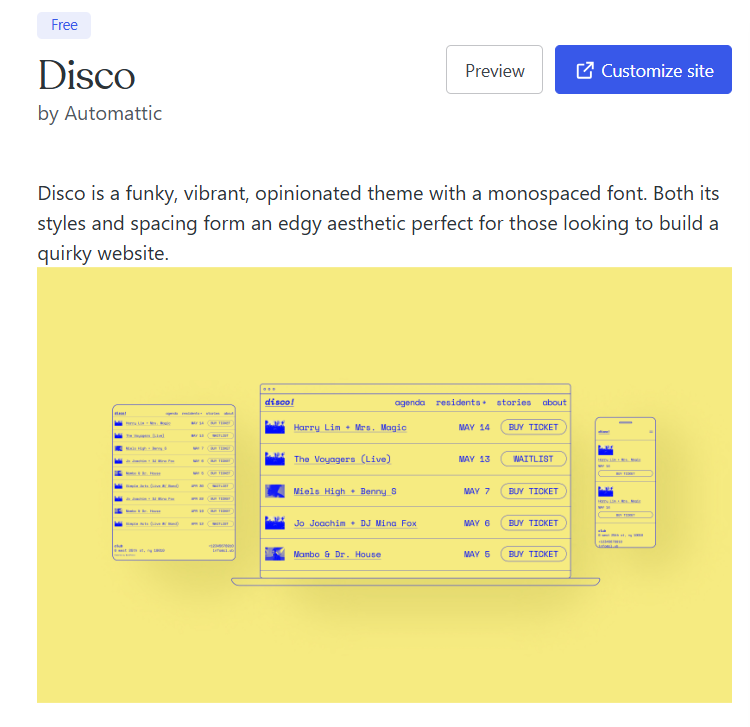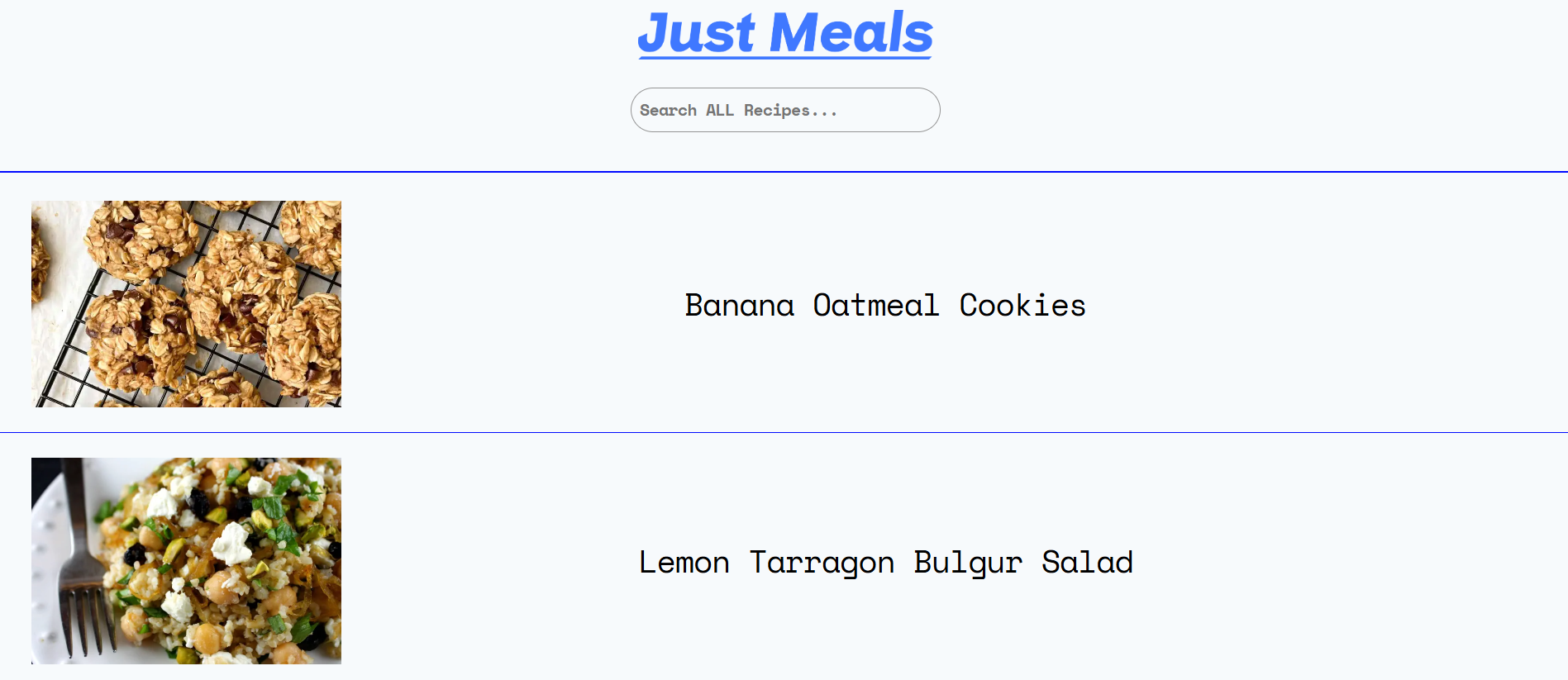Just Meals
Recipes Without the Rage Scroll
I built Just Meals because I was angry.
Okay, maybe frustrated is a better word. But you know the feeling. You're in the middle of a grocery store aisle, one hand gripping your phone, the other balancing a bunch of bananas and a bag of flour, desperately trying to scroll past a 1,200-word personal essay about someone’s life-changing Tuscan vacation—just to see how many eggs go into banana bread.
We’ve all been there.
Recipe websites, as they exist today, are often traps. You’re not browsing food ideas; you’re navigating a minefield of autoplay videos, pop-ups, and endless scrolling—all designed to juice ad impressions, not serve the reader. Most of them are bloated messes of outdated code, Google Analytics trackers, abandoned jQuery plug-ins, and CSS files fatter than a holiday roast. The information you actually need—ingredients, steps, maybe a cooking time—is buried under fluff and digital debris.
So I decided to make the kind of site I wished existed.

Phase 1: The Seed of an Idea
The concept for Just Meals was pretty simple: strip it all back. A recipe site built not for clicks, but for humans. A site that treats people with some baseline respect. Where information is immediate, clear, and unobstructed.
The “Just” in Just Meals does double duty here. It means only meals—no SEO stuffing, no long personal anecdotes unless they actually matter. But it also stands for justice. Not in some grandiose, world-saving way, but in the sense that we deserve better from the web. The internet started as a place of trade and exploration. Somewhere along the way, we let the wrong people turn it into a casino full of slot-machine UX.
This project is my micro-revolution against that.

Phase 2: Design With Restraint
From the very beginning, Just Meals was designed mobile-first. Because let’s be honest—that’s where recipes are used. You’re in your kitchen, or you’re in the store, checking what you need to buy for dinner. Cross-device compatibility wasn’t a bonus feature—it was first priority.
That’s why I ditched all the frills. No page transitions, no fancy animations, no auto-playing anything. It’s clean, it’s fast, and it works.
For the theme, I chose Disco by Automattic. It has this retro, old-web energy that I absolutely love—reminds me of when the internet felt like the wild west, not a mall. It’s a nod to that more innocent time: before every site became a surveillance trap wrapped in Bootstrap. Back when websites were lovingly built by hand, not grown in a spreadsheet to please a social media algorithm.
Just Meals is static. Text and images. That’s it. Because that’s all you really need.

Phase 3: Function Over Flash
I made an intentional choice to prioritize function over form à la Frank Llyod Wright and the Bauhaus School of Design.
We live in a world dominated by dopamine-driven design. I wanted Just Meals to be the opposite of that.
When you land on the homepage, you’re greeted with a clean list of recently added recipes. At the top, there’s a search bar. That's all. No ads, no “load more” buttons, no newsletter pop-ups begging for your email in exchange for a 10% discount on... what, breadcrumbs?
Each image and title is a link. That’s it. You click, and you're in. Dates, likes, and other UI distractions are gone. The goal is clarity and calm.
And let’s talk performance: the site is blazing fast. Why? Because there’s nothing on it that doesn’t need to be there. That’s the secret, really. Minimalism isn’t just an aesthetic—it’s an architectural choice. Fewer requests, smaller files, faster load times, happier cooks.

Phase 4: A Bit About the Build
Okay, nerd break 🧑💻
I built Just Meals in WordPress, which might surprise people who associate it with clunky page builders and bloated themes. But it’s flexible, it’s open source, and if you’re willing to roll up your sleeves, it can be really lightweight. Disco gave me a nice base, and I customized everything from there.
The site is static at heart. It’s basically an index of recipe posts: each one just clean HTML with an accompanying photo and (of course) a properly formatted ingredients list and method section. No JavaScript necessary—though I reserve the right to break that promise someday if I add filtering or fancy search.
I even removed the publish dates from each recipe. Why? Because a good recipe is timeless.
Phase 5: Philosophical Sauce (Optional, but Recommended)
There’s a bigger idea behind this site. I mentioned earlier that Just Meals is a kind of rebellion. That’s not hyperbole.
What modern tech companies do to users—especially non-technical users—is borderline exploitative. They harvest data, manipulate behavior, and degrade the user experience in pursuit of ad revenue. It’s gross, and we’ve all sort of accepted it as normal.
But it doesn’t have to be. The web can be kind. The web can be generous. That’s what I’m trying to build here: a small, functional corner of the internet that doesn’t demand anything from you except curiosity and an appetite.
No cookie banners. No trackers. No dark patterns. Just... meals.
Wrapping Up: What Comes Next?
I update Just Meals regularly, adding recipes from all over the world. Some are traditional, others are weird experiments I threw together on a Sunday afternoon. All of them are written clearly, formatted consistently, and fact-checked.
My dream is for Just Meals to become the largest open recipe archive on the internet, with contributions from cooks around the world. Maybe that’s ambitious. But even if it doesn’t scale that far, I’ll still be proud of what it is right now: a fast, clean, respectful recipe site that solves a real problem with a human touch.
Also, it’s really satisfying to build something that works exactly how you think it should. It’s like seasoning a dish perfectly and tasting it before anyone else. Quiet joy.
So if you’re tired of scrolling past someone’s origin story in order to find out how to roast a chicken... I built this site for you 🍲
Spoiler alert: Just Meals is live now 👇
(And it doesn’t suck.)
🍷
